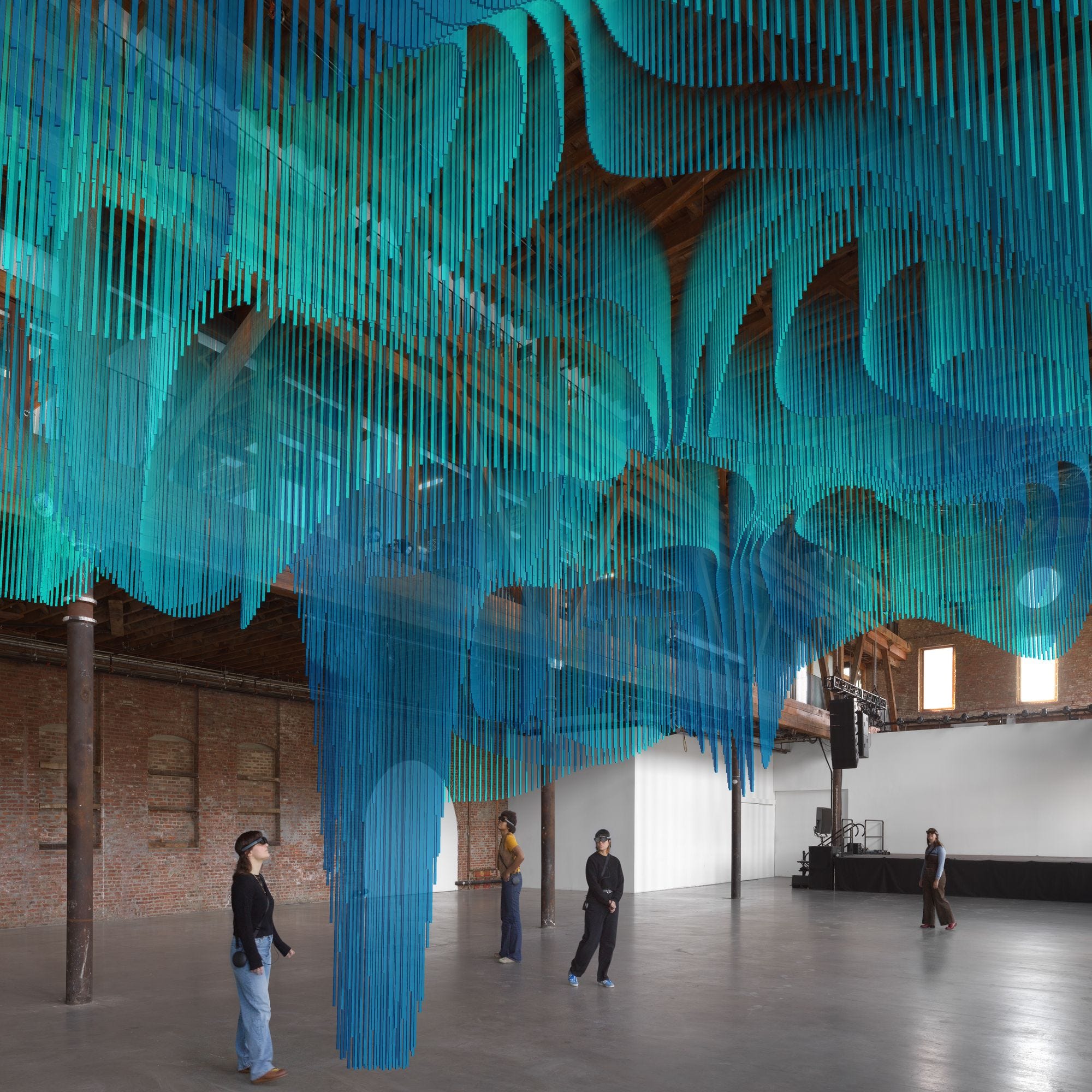Tin Drum: Medusa (Capsule Review)


[Original publication: No Proscenium, 4/11/23]
A dinner party. A conversation about “what architecture means if it’s free from the physical realities of shelter or boundary or whatever it is that it’s supposed to do.”
In recounting this story to Fast Company, Todd Eckert described the inception of Medusa, a new mixed reality experience. Eckert is the founder of Tin Drum, a collective of artists, designers, and engineers creating content for MR devices. A collaboration between Tin Drum, architect Sou Fujimoto, and director Yoyo Munk, Medusa made its North American premiere at Pioneer Works.
Get Laura Hess’s stories in your inbox
Join Medium for free to get updates from this writer.
SubscribeSubscribe
So what does architecture mean if it’s free from physical realities? I found out on a recent trip to New York.
The main hall of Pioneer Works is a vast emptiness. Visitors to the former factory are greeted by 40-foot ceilings and little else. People wander with an odd sense of idleness, a drifting preamble to an unknown reveal. A few lounge picnic-style. Others line the room’s edges like lint. Most are wearing the vaguely steampunk Magic Leap glasses, twisting and angling to see…?
The glasses unveil an expanse in the rafters. Thousands of teal reeds undulate, rising and falling, sometimes with speed and other times as a slow cascade. I reached my hand out, like a child meeting its first snowfall. Tin Drum describes it as “a virtual space that draws inspiration from atmospheric auroras as well as deep sea dwelling siphonophores.” The digital installation feels organic and wild, like a true aurora borealis or ancient sea creature.
Director Munk characterizes Medusa as “a space for contemplation in times of rapid change, where divisions that may have once felt solid are disintegrating and reshaping themselves.” It’s this sensation of disintegration that creates a seamless overlay between the physical and augmented architectures. Compared to a virtual reality headset, the Magic Leap 2 glasses are lightweight and optically transparent. Seeing other participants fends off the isolation that VR can induce. Movement through physical space isn’t impeded and the resulting freedom expands interaction with the AR aurora.
The augmented projection is accompanied by an ambient soundscape: “an abstract juxtaposition that weaves together underwater recordings with an original score” (composed by the late artist Ryuichi Sakamoto and reinterpreted by pianist Kelly Moran). Live performances by Moran amplify the virtual effects and vice versa; it’s a spectacular example of integrated technology combined with the presence of liveness.
Medusa is a visceral, surreal threshold. It hovers in the blur between reality and fantasy, a “new realm” of sensory experience, and an ultimate offer of possibility. Accept the invitation.